Gardening is one of the nation's favourite pastimes, with estimates that half of the British population enjoy gardening in some form. It’s a satisfying and rewarding hobby that keeps you active, and it’s proven to be good for your mental health too.
Just being outdoors in itself can help boost and inspire creativity, so before you know it you’ll be full of your own ideas to improve your space.
You don’t have to have acres of land or be a horticultural expert to reap the benefits, even a small courtyard or patio can become your own little patch of paradise. In fact, you don’t even need to spend lots of money either – after all some seeds, soil and water are all you really need.
But where do you start? How do you take your home garden to the next level and what can you do to cheaply transform your outdoor space?
From fun projects to show off your favourite plants, to money saving hacks and tips for smaller spaces, we’ve drawn together our top DIY garden ideas to get you going on your next green-fingered adventure.
Use these handy links to jump to a section, or read on for plenty of garden inspiration you can do yourself.
The best reasons for doing DIY in the garden
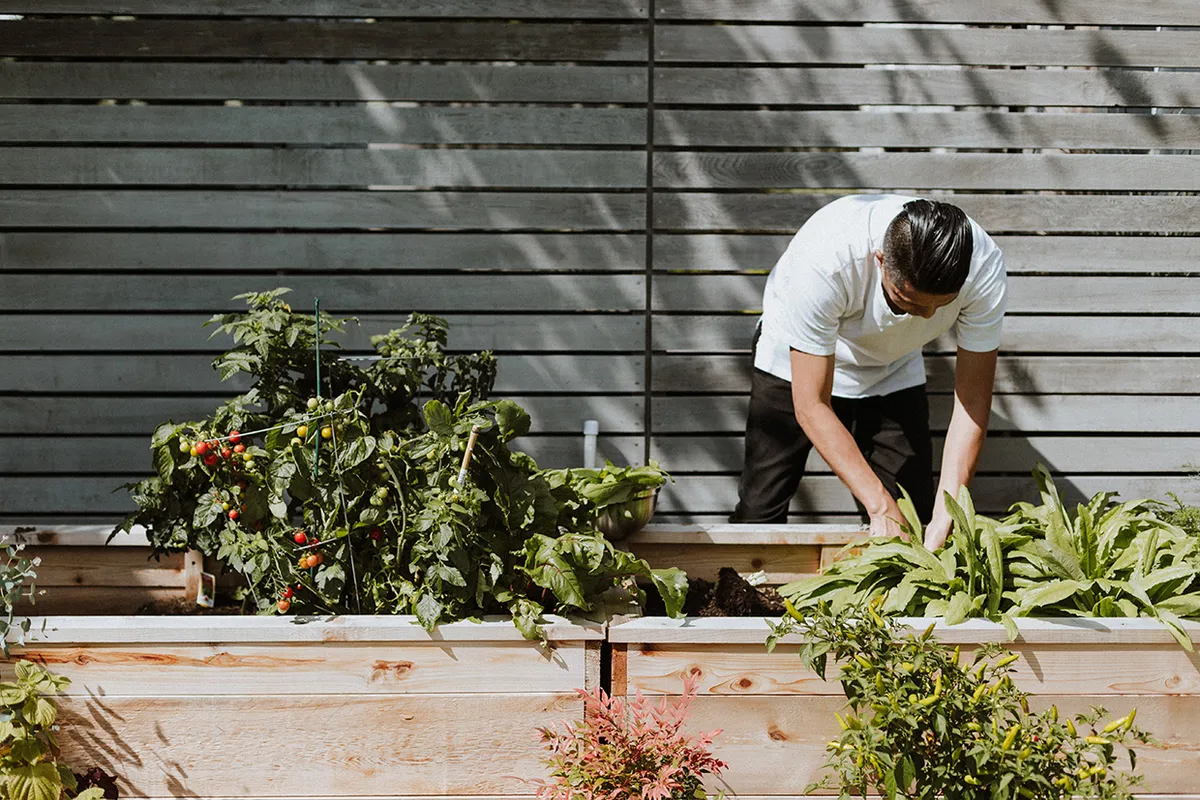
There are three major reasons why experimenting with various DIY garden ideas is well worth your time.
Cost effectiveness
DIY in the garden saves you money. Gardening can become an expensive hobby if you let it – terracotta pots and exotic plants aren’t cheap. With everyone watching their wallets at the moment, it’s never been a better time to get creative.
Practical considerations
Outdoor furniture, plant stands, containers and even plant supports such as obelisks are all exposed to the elements – there are ways you make them last longer, but over time they will inevitably start to wear down. You won’t feel quite so bad about this if you’ve made them yourself at a minimal cost, plus any way that you can reduce, reuse or recycle has got to be a plus.
Everything changes
Gardens are in a constant state of change, especially so for container gardeners. The shifting seasons have a huge impact on what’s on display in your garden. The survival and losses of plants, colour arrangements, how you use your garden and changing tastes all make a difference too.
Sometimes it’s worth experimenting with a DIY gardening solution first before buying a finished item from a store. For example, you could quickly and easily make a DIY bench from some bricks and a plank of wood, then see how much you actually use it.
If it turns out to be less useful than you initially hoped, you’ll have saved yourself a considerable amount of cash… which you can invest in a wider range of plants!
What garden tools are most useful for DIY?
While several of the DIY garden ideas on this list require you to source or upcycle materials, there are some tools that will always come in handy for the thrifty gardener.
1. Cordless drill and bit set
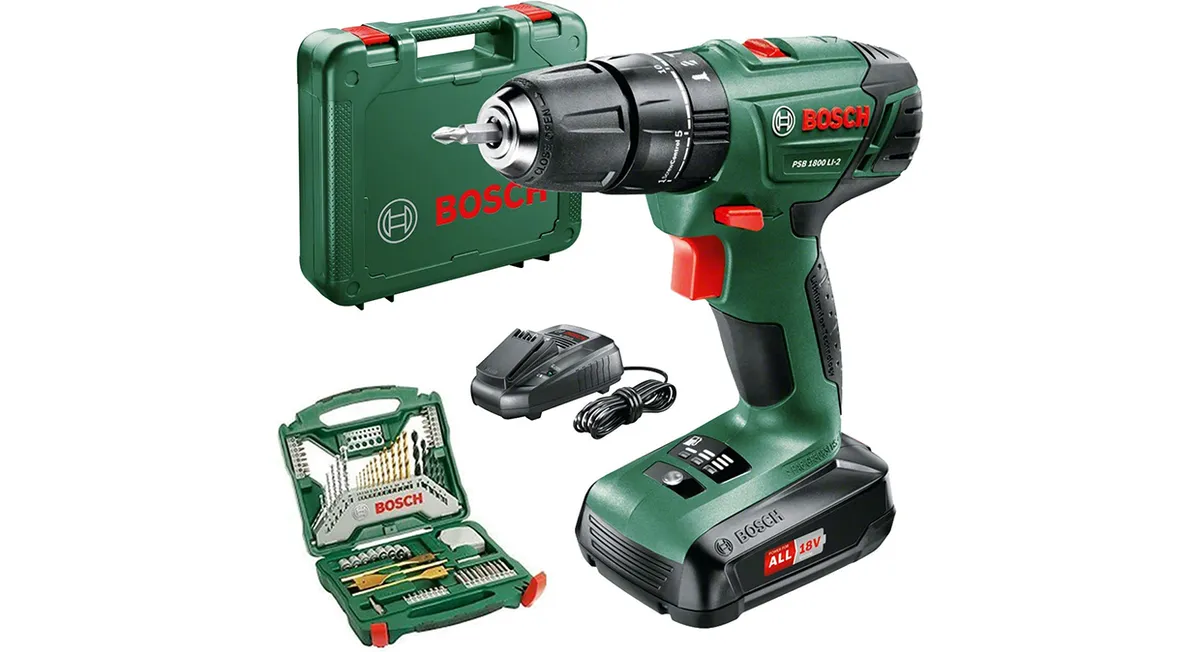
From making drainage holes in containers to screwing together wooden constructions, a good cordless drill is essential for DIY garden projects.
Getting the right kit will save you time and spare you frustration. Having a drill bit set that includes many different sizes gives you increased flexibility, with specific drill bits required for woodworking and metal. Using a cordless drill rather than a mains-powered one means you’re also free to do your garden DIY wherever you want.
Be careful though! You want to make sure you give your drill bits a good wipe down once you’re done using them in the garden, as they can rust quickly if put away when still wet.
- Buy a Bosch cordless drill and bit set from Amazon
2. Heavy duty gloves

Quality gardening gloves are always a wise investment and it’s not all about keeping your hands clean!
When getting creative with any wood or metal materials, you need to protect your hands, especially from nasty splinters. Rigger gloves are a popular choice for this as they’re often used by seasoned gardeners to protect themselves from thorns when pruning or doing rougher jobs.
- Buy these thermal rigger gloves from Crocus
3. Jute cord or reusable cable ties
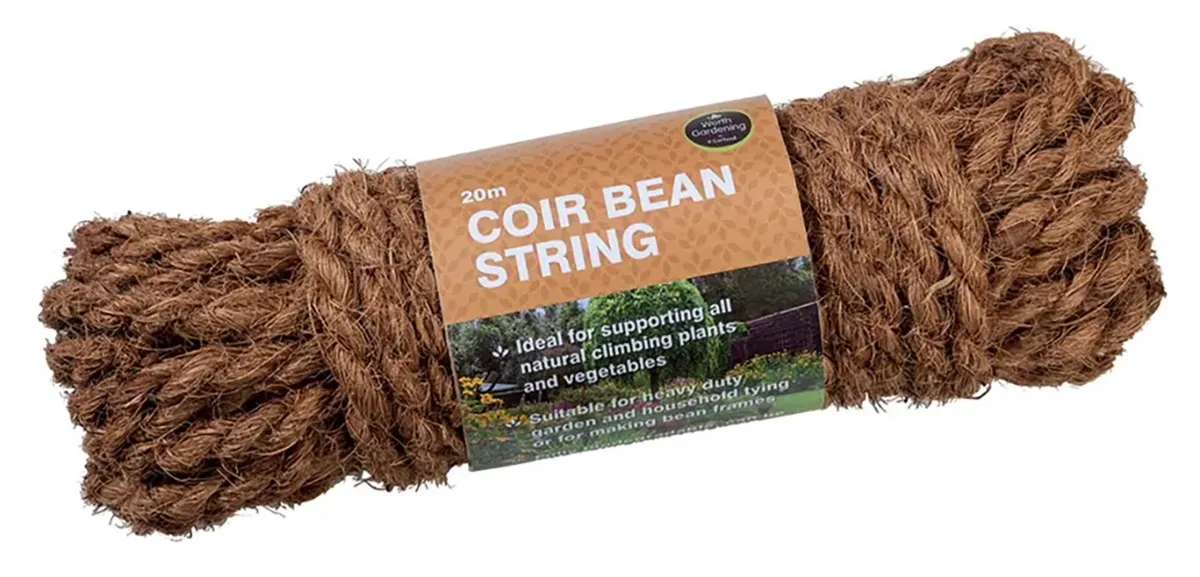
A remarkable number of tutorials out there will advise you to use cable ties. However, the Gathered team prefer to avoid utilising single-use plastic in the garden wherever possible.
Instead we’d recommend using Jute twine or cord for your garden DIY needs, as it’s both strong and biodegradable (and you can also use it instead of plastic plant ties too).
If you really need the extra strength that plastic cable ties provide, you can now buy reusable cable ties to limit your plastic consumption.
- Buy some Jute twine from Wilko
- For thicker cord, use this Coir bean string from Crocus
4. A long-handled trowel
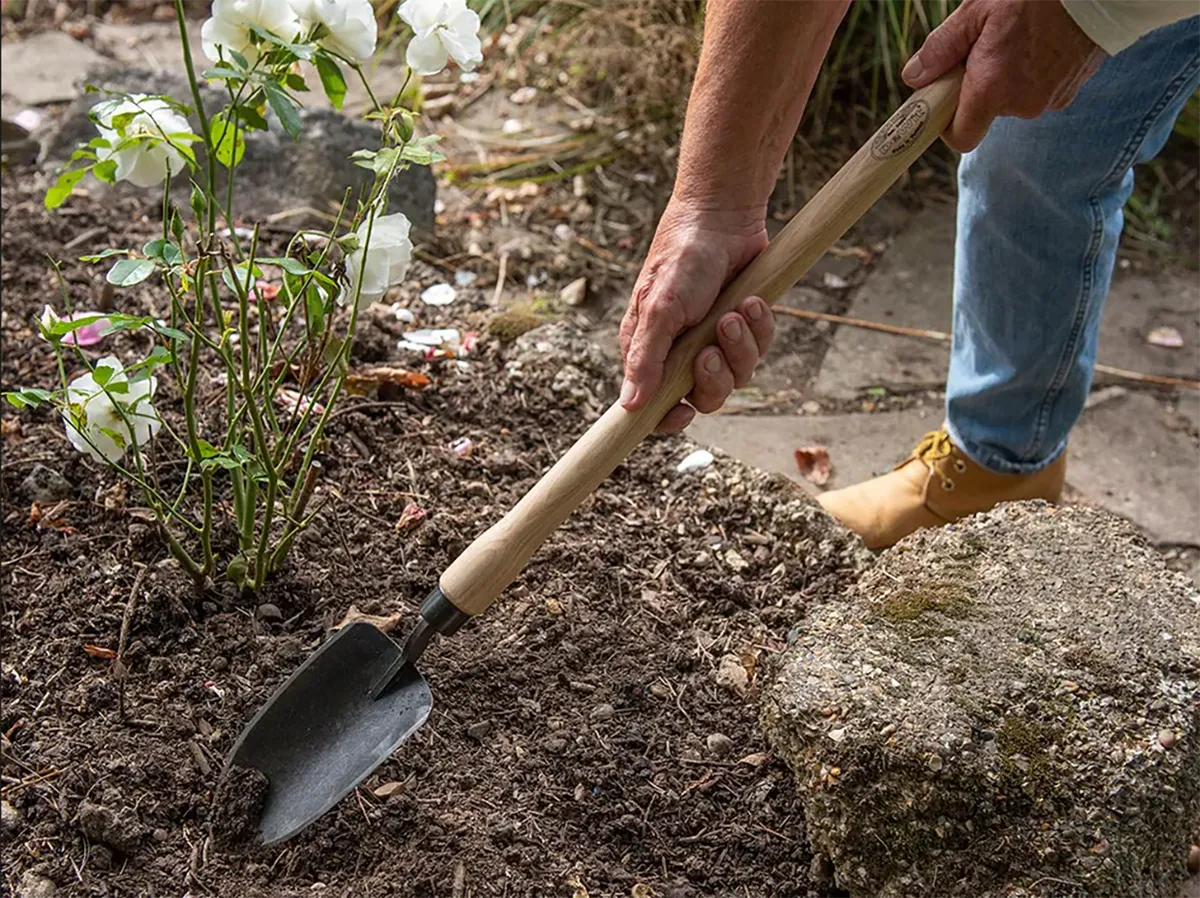
While many gardeners will have either a small hand towel or a full size shovel, we think getting a quality long-handled trowel is a really useful tool for many different gardening purposes.
The increased control and leverage mean you can use it for everyday jobs like digging small holes for planting, but will also help when tackling bigger jobs such as digging out sections when plotting spaces.
- We’d recommend this Dewit drop grip handle trowel from Crocus
5. A tool sharpener

If you’ve been gardening for any length of time you’ll almost certainly have already acquired some basic garden tools such as secateurs or a gardening knife. It’s important to look after your tools, especially if you end up using them in your DIY jobs (snipping bits of wire with your secateurs can do a surprising amount of damage to them).
Some people like to sharpen their tools with a Whetstone, but this is a bit of an art in itself. We’d recommend getting a simple sharpening tool and regularly giving your tools a bit of TLC to keep them tip top.
- You should try this Multi-purpose diamond sharpening tool from Amazon
DIY garden ideas for small spaces
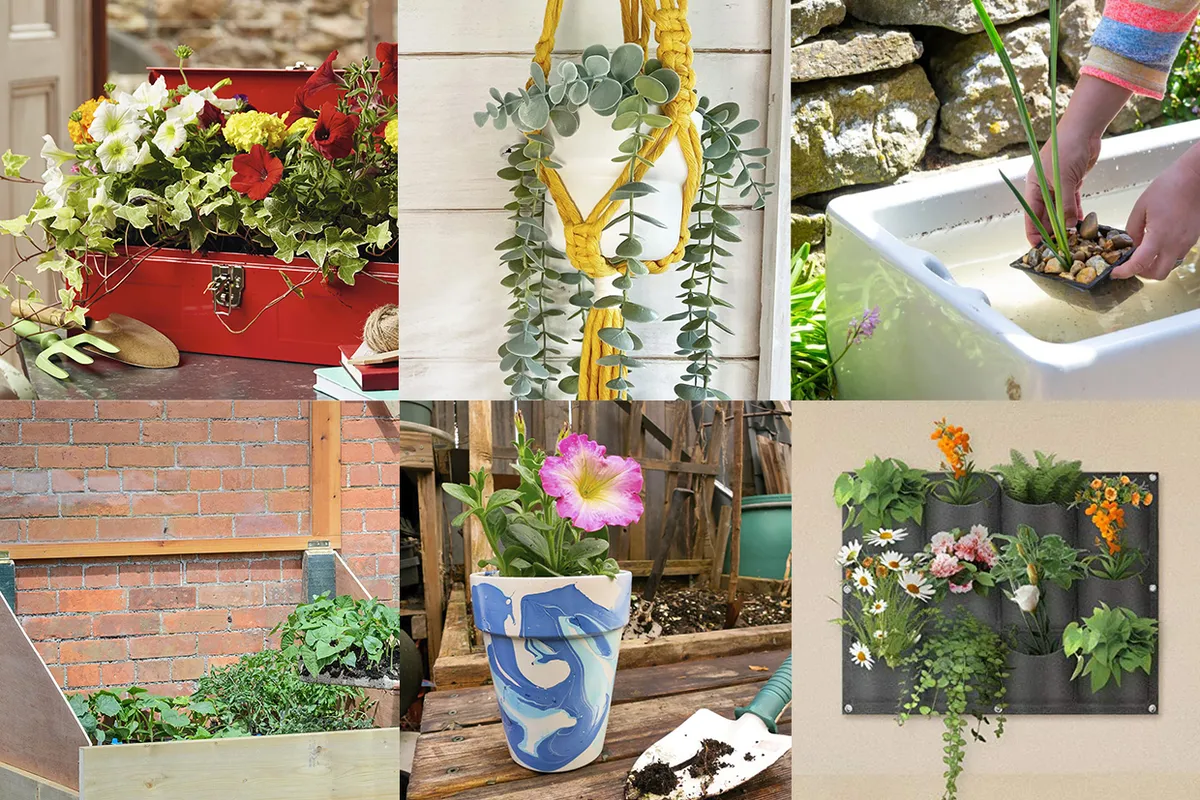
You may think that a small space will limit how much you can do in your garden, but actually it can give you that extra incentive to think outside the box.
From clever containers to vertical planting, compact composting and optical illusions, there’s loads of creative diy potential for every garden – no matter how small.
Check out our pick of the best DIY small garden ideas for an indepth look at how to turn your small garden into an enviable oasis.
Creative gardening for concrete patios
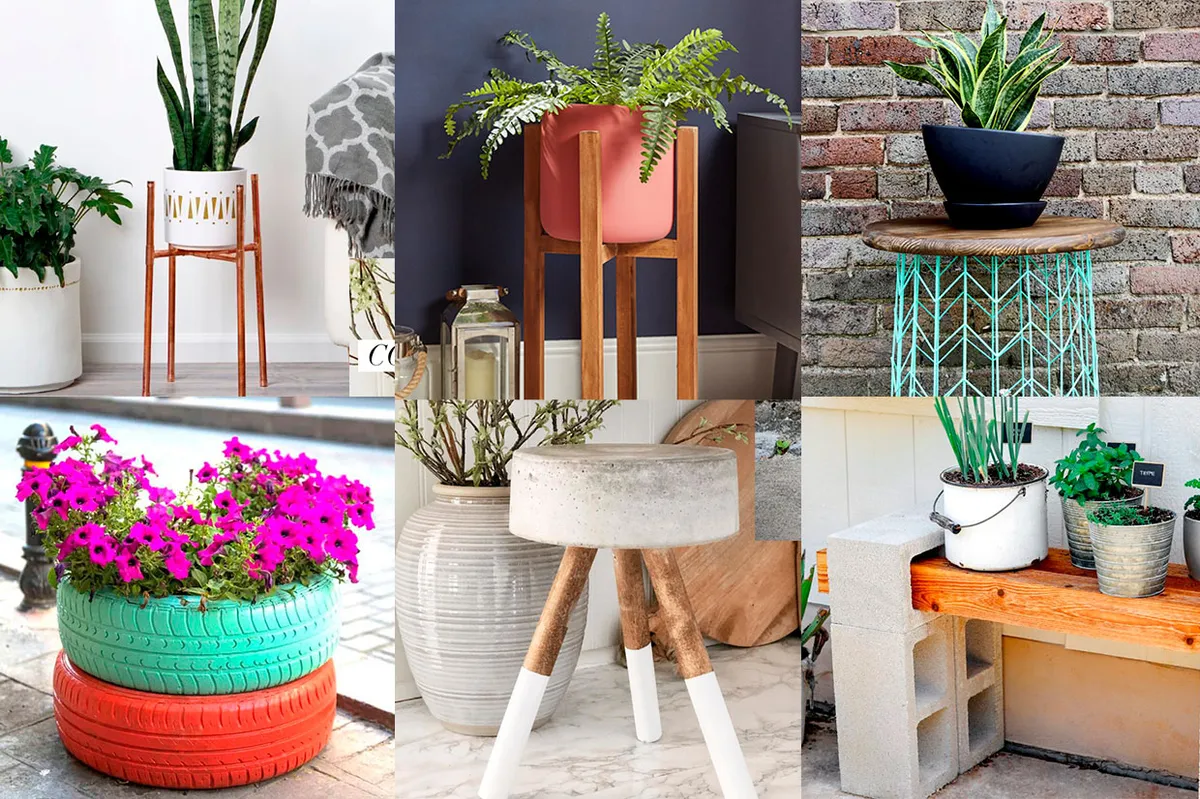
It can be intimidating if your outside space is made up of concrete slabs, however clever container gardening can turn that patio into a paradise!
Plant stands are great for raising your containers upwards, helping to give an extra dimension to drab concrete patios. Raising containers creates a multi-layered effect with your plants, achieving a fuller appearance than if you leave containers at floor level.
Raising your pots can also help your plants to capture more sunlight if your patio is shaded by fences, as well as being a good solution for using against walls and in corners.
Even better, you don’t need to go out and spend money buying multiple plant stands. There are plenty of ways you can get creative and craft your own!
Take a look at our favourite DIY outdoor plant stand ideas and add some height to your garden.
Create themed areas in your garden
One way to make the most of your garden is to theme areas. You can do this by dedicating a small section or corner of your garden, or even just with a selection of planting in a large container.
Creating different areas adds biodiversity and mimics specific planting environments in your garden. Making various areas also helps to give you different focal points to enjoy when you’re admiring and exploring your garden.
If you’re lucky enough to have a garden big enough to require paths between your areas, you can even get creative with this aspect too! Take a look at our favourite DIY garden path ideas and see how you can create a unique path and save money at the same time!
We’ve rounded up four of our favourite themes you can use to make your garden magical.
1. Build a rock garden

Rock gardens or ‘rockeries’ are popular garden features that simulate high altitude and arid environments such as mountains or deserts. As such, they’re perfect for plants that are drought tolerant, such as succulents and alpines, or even mediterranean plants.
Rockeries often centre around focal points like water features or large keystones, and are relatively low maintenance environments. You can make all sorts of different rock gardens to suit a range of different styles, from minimal japanese zen gardens to colourful painted rock gardens.
Check out our DIY rock garden ideas for more inspiration.
2. Make a home for wildlife
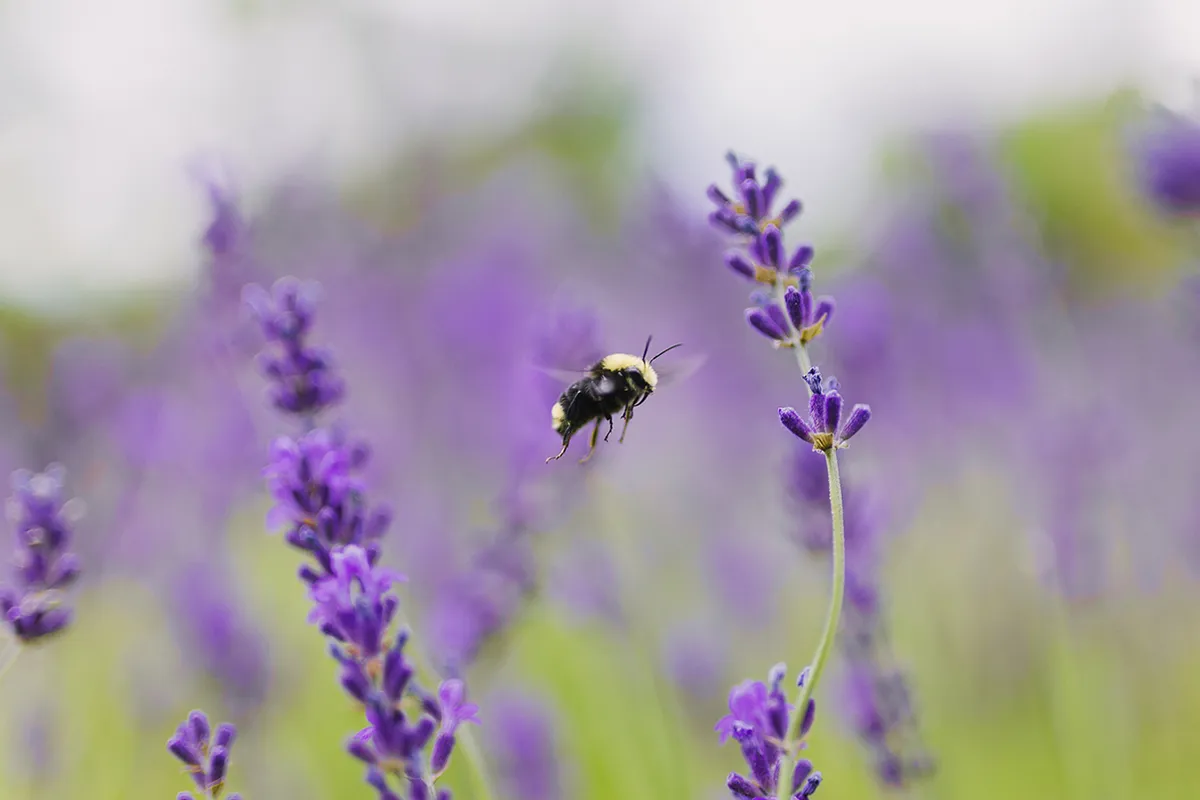
One piece of advice we always give to gardening beginners is simple - plant for pollinators, especially wildflowers. Even if you've only got a tiny space, just a couple of containers will be hugely beneficial for both you and the natural world.
By choosing plants to attract pollinators, you stand a greater chance of bringing in beneficial insects like butterflies, bees and hoverflies, which in turn will feed on those garden pests such as aphids.
So, making a designated wildlife area will give you pretty flowers as well as free pest control, meaning you don’t need to use those nasty pesticides - organic gardening for the win!
As well as providing food, you can also give our insect friends a place to live. You could make a dedicated bug hotel, however even just leaving some piles of sticks or letting a small area of your garden go wild will help. You can also consider leaving areas of your lawn to grow long or take part in No Mow May.
Gathered’s favourite wildflowers
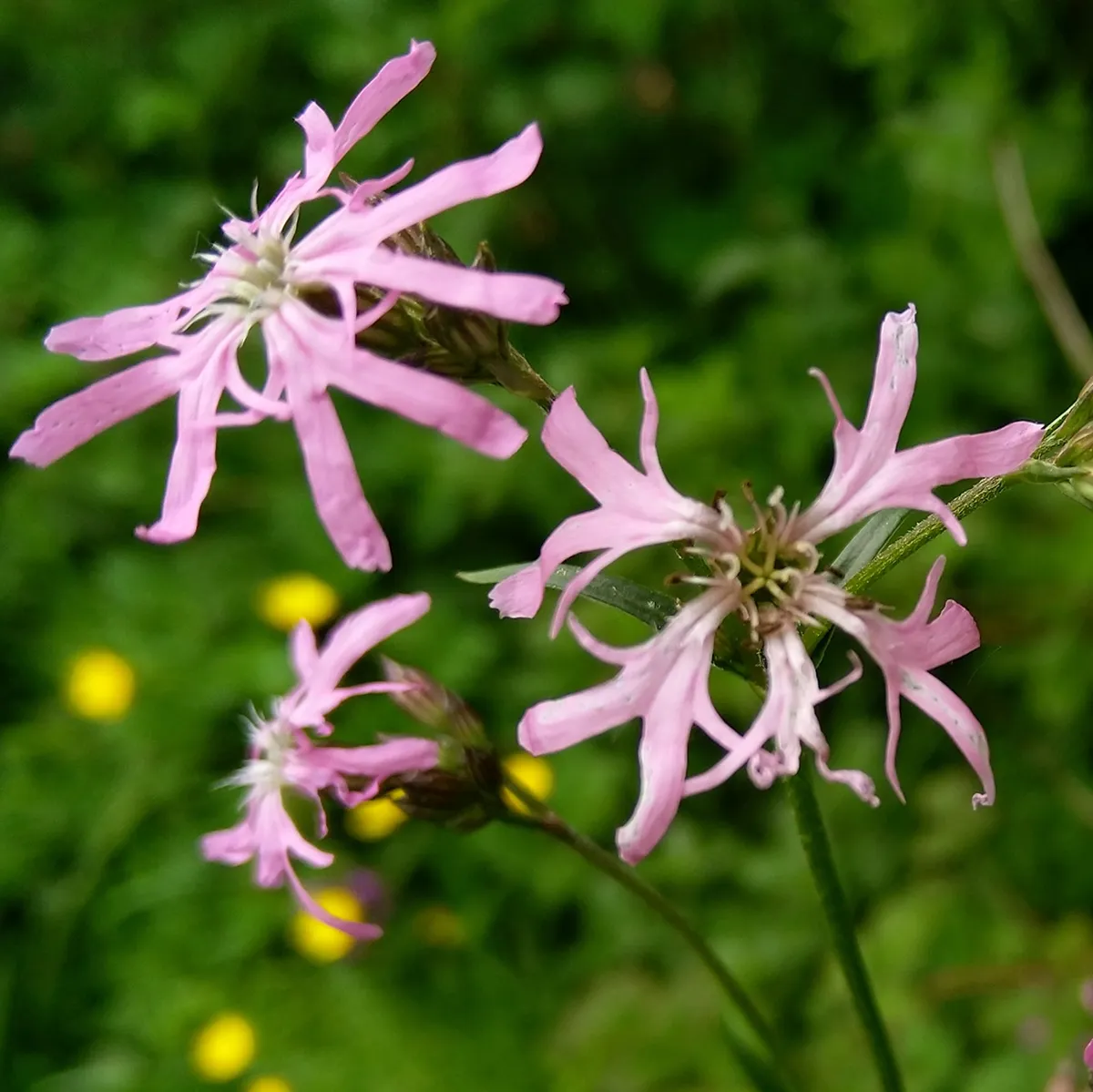
3. Treat yourself to a tea garden or herb garden
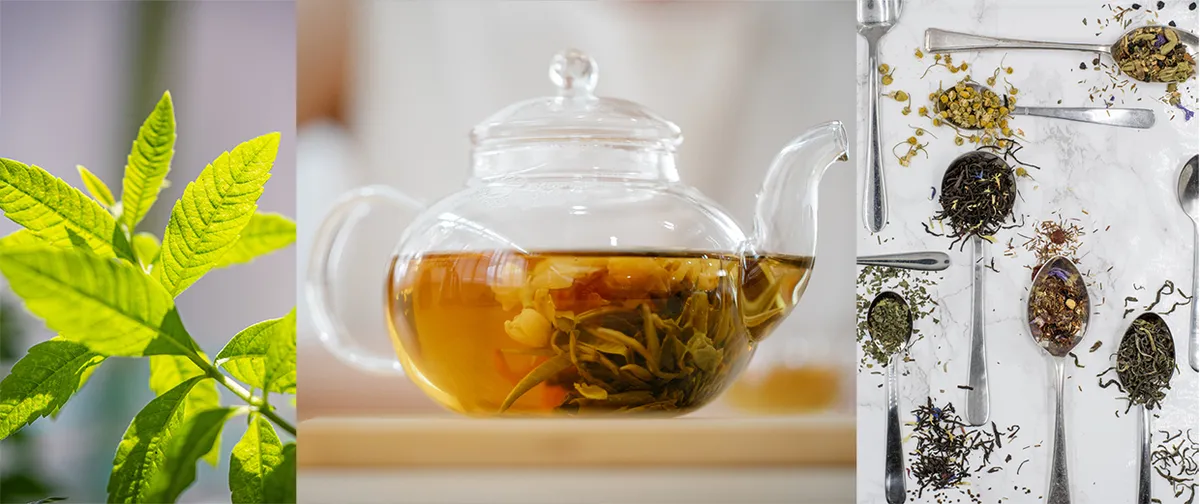
Regardless of size, planting your own tea or herb garden is a great way to get more enjoyment from the outdoors.
There’s nothing quite like just popping out to grab some fresh herbs when cooking a meal, so make sure to place your herb plants where they’re easily accessible from the kitchen. Culinary herbs have a gorgeous scent, which makes them the perfect plants to place near any seating areas.
If you’re a fan of herbal tea, there are lots of plants you can safely use to make your own refreshing drinks. Lemon verbena, lemon balm, bergamot, fennel and the huge array of mint varieties can all be used to make tea, many of which are highly fragrant.
Why not get your tea garden started with this botanical infusion plant collection?
4. Make a fairy garden for your little ones
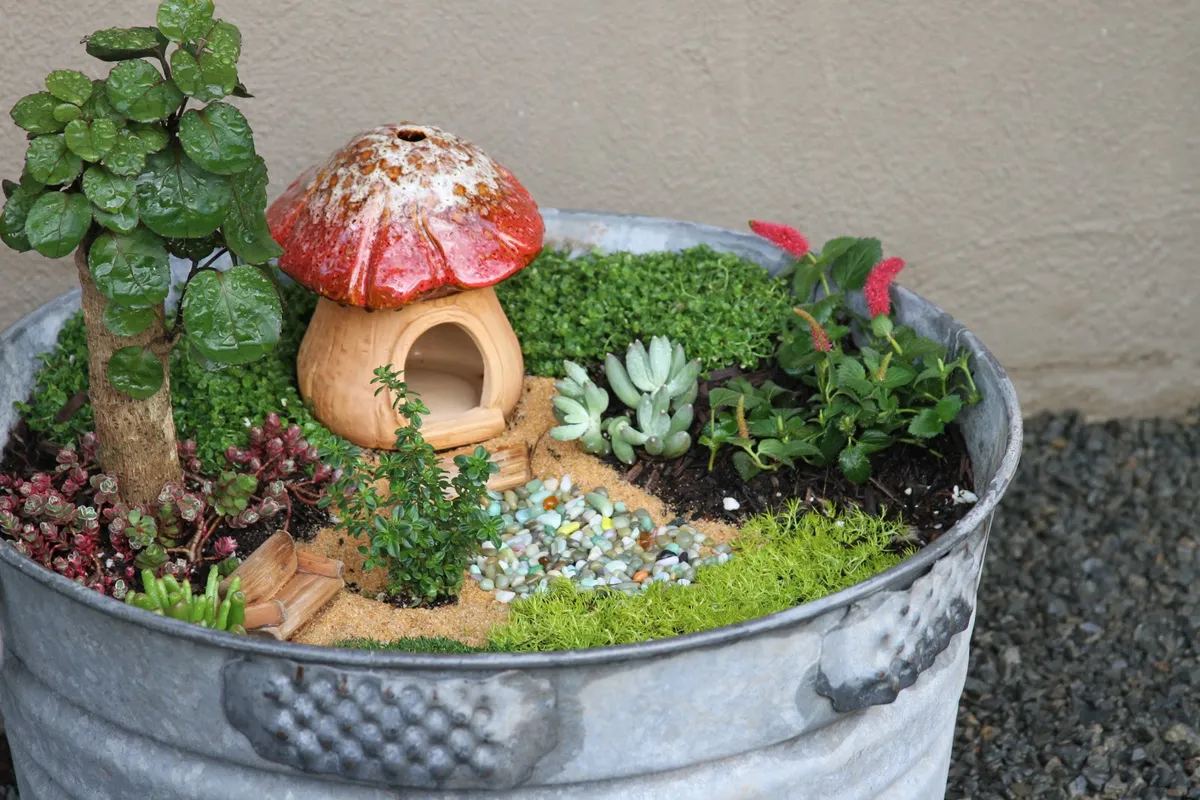
You can sprinkle a touch of magic into an outdoor area by creating a small fairy garden.
Kids love these magical imaginative spaces, and they’ll probably raise a smile from the grown ups too. They’re easy to make, whether you’ve got plenty of trees where fairies can hide or can only spare the space for a container creation.
Check out our list of DIY fairy garden ideas to help children find the magic in your garden.
Get kids growing
While you’re busy in the garden, why not get the kids involved too.
There are whole ranges of seeds designed to engage and appeal to children, like the Mr Men & Little Miss seed collection or the Suttons Fun to grow range.
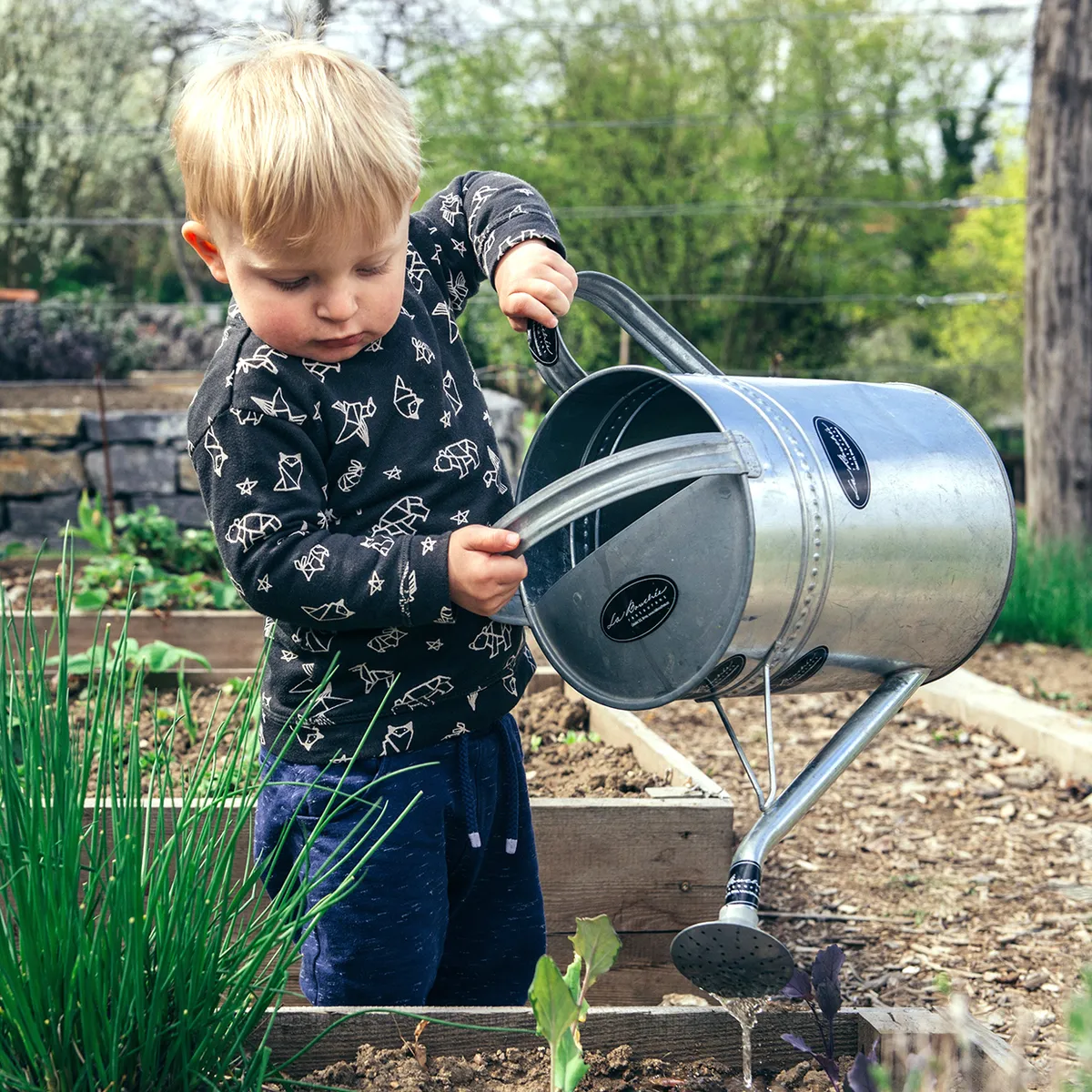
Our five favourite DIY garden ideas
Once you start adjusting your mindset and engaging your creativity, you’ll be surprised how many everyday gardening items you can make yourself with a bit of DIY.
Here’s just five of the Gathered team’s favourite DIY projects that we use in our gardens all the time.
1. Make your own plant labels
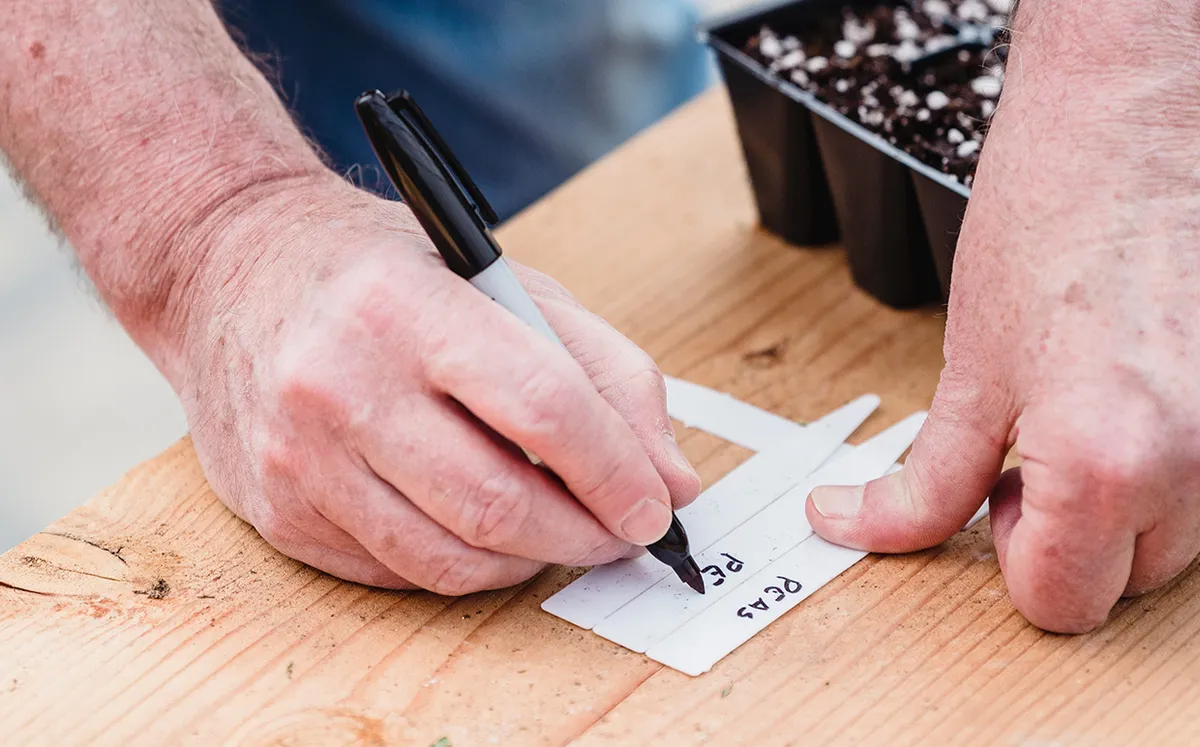
Labelling your plants is a very important part of gardening. Even if you like to let your garden grow wildly or have an amazing memory, it’s hard to tell plants apart when they’re just little seedlings. The majority of plant labels are made from white plastic, and pencil will quickly wear off so you normally need to use a permanent marker pen.
Although you can buy wooden plant labels these are often more expensive and will start to weaken and decompose after a full season. You can also save lollipop sticks in summer, or make your own simple wooden labels with basic woodwork tools.
However, our top tip is to raid your recycling bin for bits of plastic you can turn into labels. Margarine/butter tubs and plastic milk bottles or anything which has a flat surface will work well.
How to recycle plastic into DIY plant labels
Using a pair of scissors (not your best sewing scissors though), cut out the flat sections of plastic, then divide into label-sized pieces. Remember to cut one end into a triangular point to make it easier to place into the soil.
The great thing about making your own labels is that you can make as many as you need, and if they get to the point where you can’t use them anymore, you can simply give them a clean and pop them back in the recycling.
Create your own seedling pots
Even if you have a large garden and don't use containers, everyone needs to start their seedlings off in a pot of some sort. While there are now thankfully some more eco-friendly options readily available such as cardboard pots or coir seed pellets, there are ways to make your own recycled pots for free.
You can turn almost anything into a pot, you just need to make sure it has adequate drainage. Yogurt pots and ice-cream tubs are easy solutions, and the bottom halves of plastic milk bottles and Tetra-paks can all be used as containers.
Turning a tub into a pot
Use a relatively sharp spiked object such as a skewer or (as long as you’re careful) a scissor blade to poke holes in the bottom for drainage. If you’re raising your seedlings indoors, don't forget to place a tray underneath so the water has somewhere to go.
Make bio-degradable pots
If you want to be super-eco friendly, you can even make seedling pots out of biodegradable materials. You can easily turn toilet roll cardboard tubes into seedling pots by folding one end in on itself.
You can also make seedling pots out of newspaper – all you need is a small cylindrical object such as a jam jar to act as a mould. You do need to be careful when watering your seedlings, as the paper gets weaker if it gets wet. Because newspaper is biodegradable, when the seedling is large enough to plant out you can simply put the paper pot straight into the soil.
2. Customise your plant pots

There are a huge range of different plant pot styles available, and correspondingly a huge price range too. Even if you can’t afford fancy pots, you can always get creative and transform plain plastic pots into cool containers.
For a matching colour palette of pots, you can simply give them a coat of paint. That’s just the tip of the iceberg though, you’ll find loads of inspiration in our list of plant pot painting ideas.
We particularly love using metallic marker pens to draw fun designs on our plain plant pots.
3. Use macrame to make your own hanging baskets.
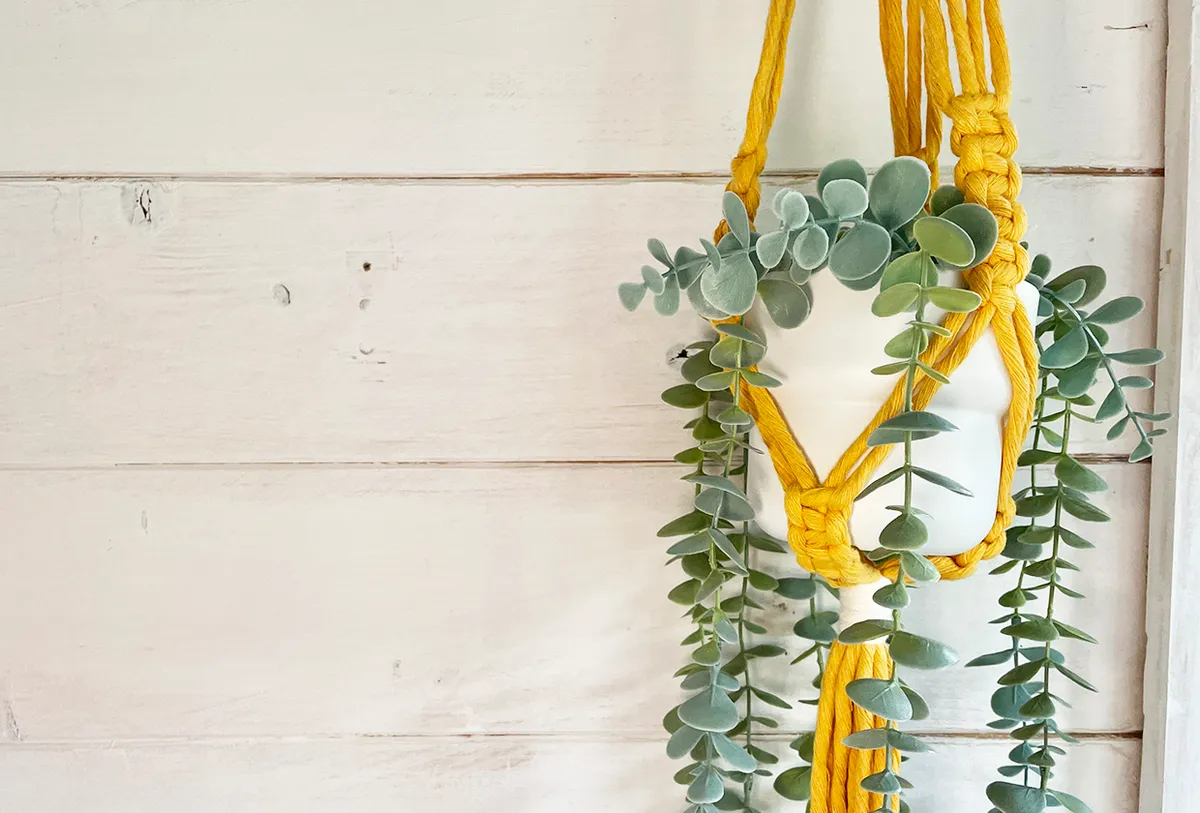
Even if you don’t have a garden at all, you can still enjoy a bit of horticulture thanks to hanging baskets. While they’re not expensive, the liners and chains do have a tendency to degrade over time. One of our favourite solutions to this is to make your own hanging baskets using the medium of macrame.
Learn how to make your own custom macrame hanging baskets
You don’t need to be an expert, in fact it’s remarkably easy to make a simple macrame hanger. All you need is some sturdy rope or cord, and once it starts to get worn down by the elements, you can simply make another. You can also make your hanger to fit any size or type of pot, just remember that it will need to have drainage holes when using outdoors so that it doesn’t fill up with water.
They look great dangling from balconies, or you can hang them from a hook or bracket to make your plain fences a bit more interesting. We particularly like to use trailing plants such as tumbling tomatoes in macrame hangers as they create a lovely cascading effect.
4. Make a compost heap - the original recycling project
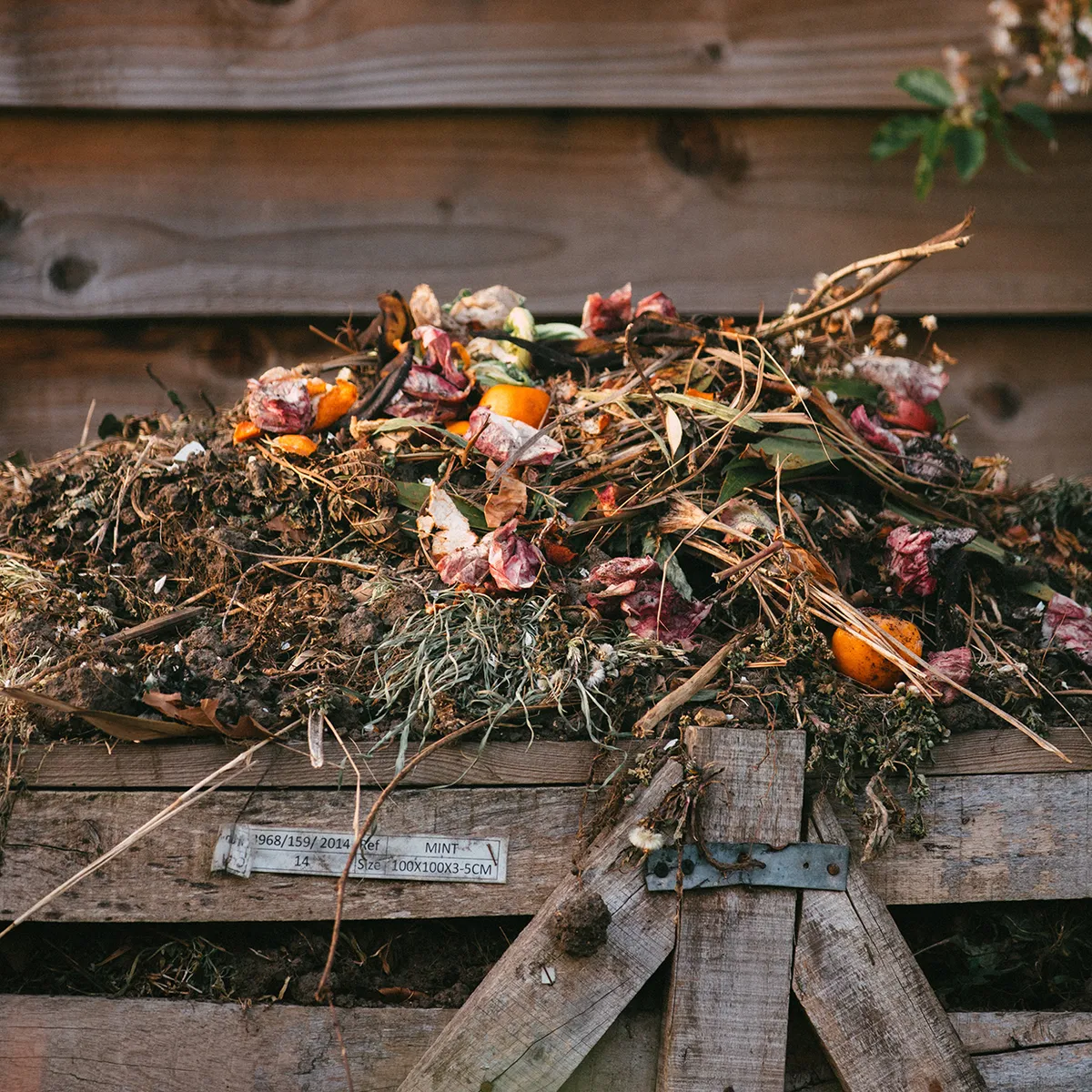
At its core, gardening is all about embracing the DIY ethos, and there’s one recycling project that every good gardener should participate in – composting! What could be better than turning your garden and kitchen waste into lovely rich compost that you can use in the garden?
How composting works
To put it simply, natural micro-organisms such as bacteria and fungi break down the waste content, producing a nutrient rich compost material. Many people assume that a compost bin will be smelly or full of flies, but as long as you add the right balance of materials and get the conditions right this won’t be a problem and you can just let nature do its amazing work. Finished compost makes an excellent mulch or soil improver that will really aid your plants growth – and best of all it’s completely free.
What if I don’t have room for a compost heap?
Fear not, even small space gardeners can get creative with their food and garden waste.
One such solution is to make a wormery. It’s a similar process to composting – just faster and on a smaller scale. The worms eat your kitchen and (small amounts of) garden waste, producing a liquid ‘worm tea’ which can be used as a liquid fertiliser, as well as a compost material made from their castings (yep, that is worm poop).
You will need to get special tiger worms and there are also a range of wormery bins that you can buy if you don’t fancy making one yourself.
5. Make your own fertiliser from flowers!
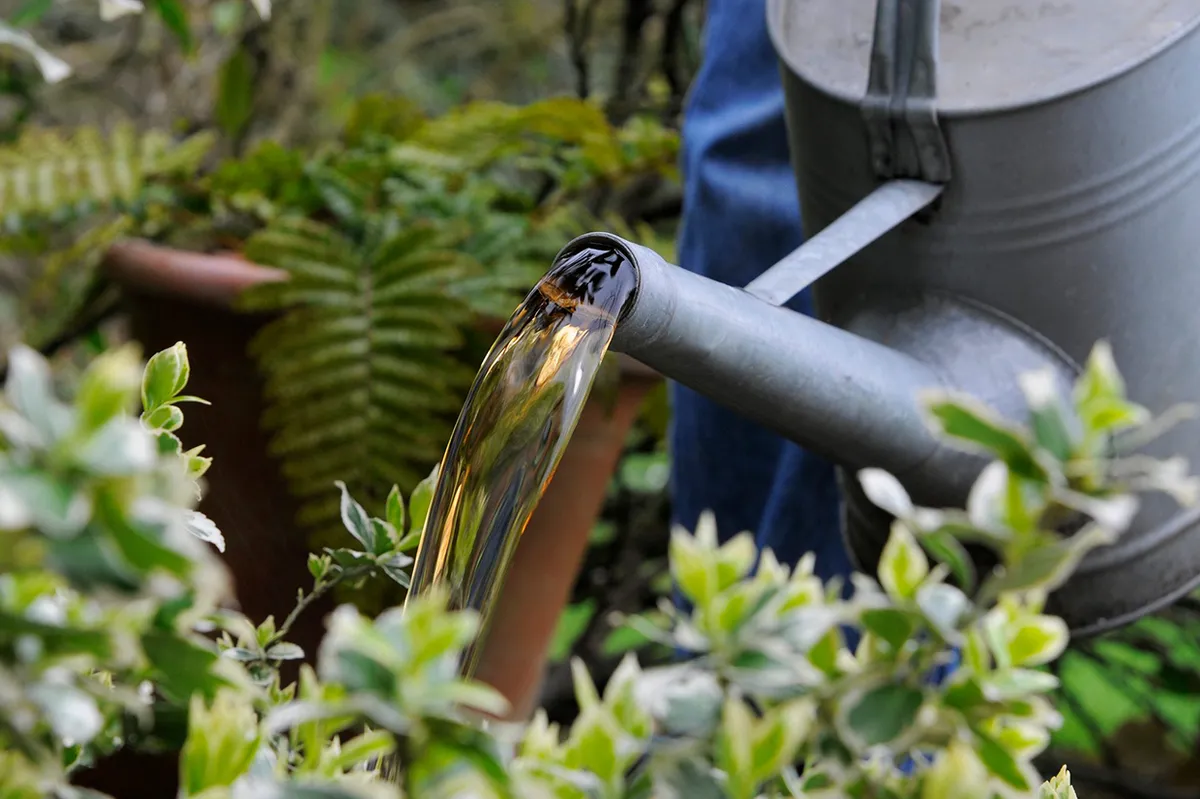
If you love the idea of making your own gardening goodness for free, there’s another way to make your own DIY garden fertiliser – Comfrey tea.
This is one garden DIY that is incredibly simple and we make it year after year in the garden. Comfrey is a beautiful plant to grow in its own right and bees absolutely love it, although you should be aware that it can irritate some people's skin so wear gloves when handling (and even though we call it comfrey tea you should definitely not drink it!)
How to make comfrey tea (and avoid the smell)
The simplest way to make comfrey tea is to harvest the leaves, chop them up then put them in a bucket or container (preferably with a lid), weigh them down with a brick and then leave it alone for a few weeks.
Some people add water at this beginning stage, but as comfrey breaks down it does smell quite disgusting (be prepared to gag). We’ve found from experience that letting it rot down first and diluting the liquid produced afterwards reduces the smell.
The resulting liquid feed is rich in nutrients, particularly potassium, which is brilliant for your tomato plants. In fact, even just chopping comfrey leaves and placing them at the base of your tomato plants will help give them a boost if you don’t want to deal with the stinky liquid.
Even the experts love DIY garden ideas
Get even more ideas for your garden with Max Murdo’s Upcycling Outdoors book, which contains 20 brilliant projects using reclaimed materials.
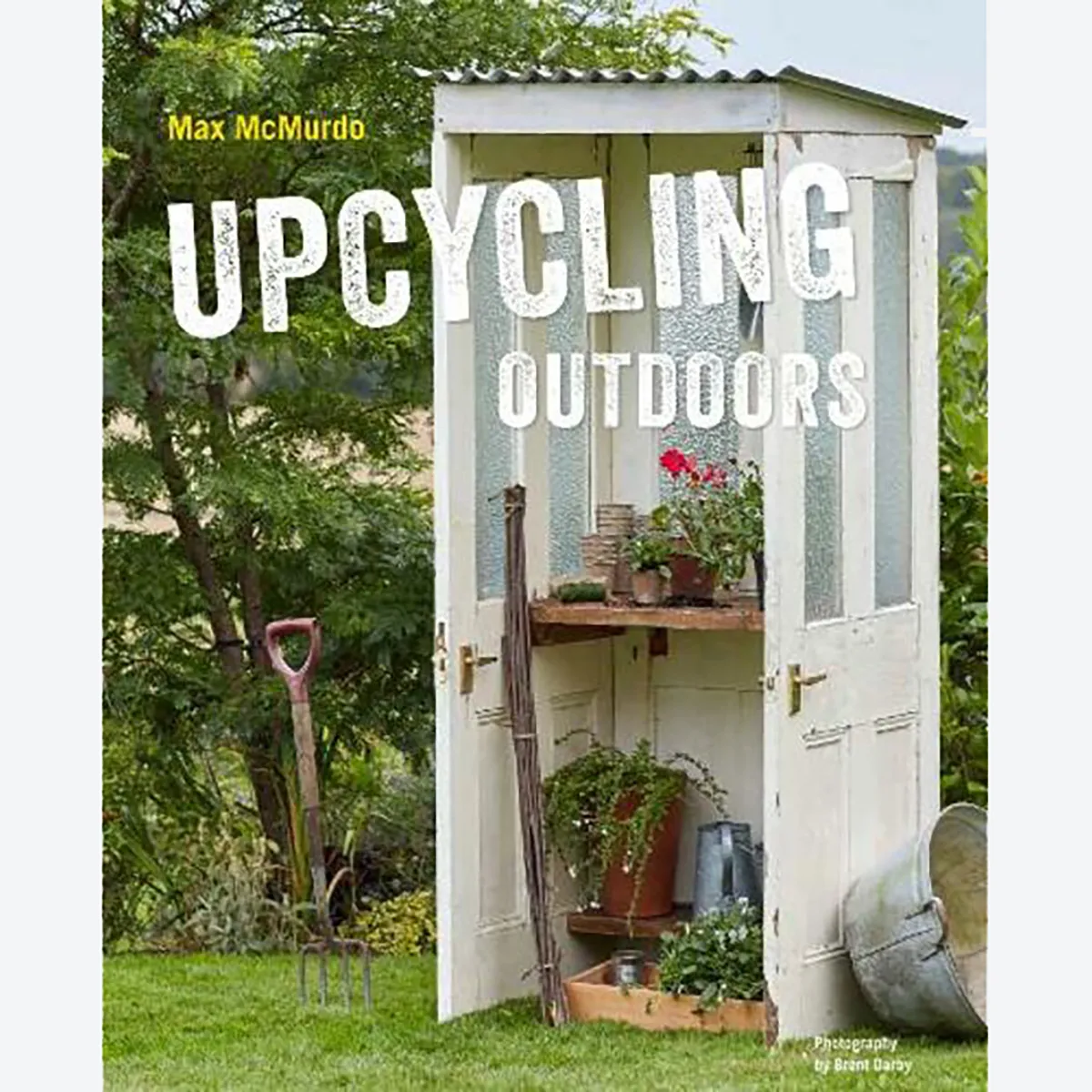
Most importantly, enjoy your garden!
Now that we’ve given you some DIY garden ideas, we recommend spending a bit of time outside and just have a think about how you could use your creative skills to improve your space.
The most important thing you can do in your garden is take time to enjoy it. Even in winter time, wrap up warm and just spend a little time outside admiring nature. Take time to notice the smaller details – sketching or painting your plants can help you appreciate the beauty of nature, as well as giving you a few moments of mindfulness.
Learn how to paint your flowers
It doesn’t matter if you’re an accomplished artist or a complete beginner, we think every gardener will benefit from taking time to paint their plants.
Check out Gathered’s tutorial on how to paint watercolour flowers today.
